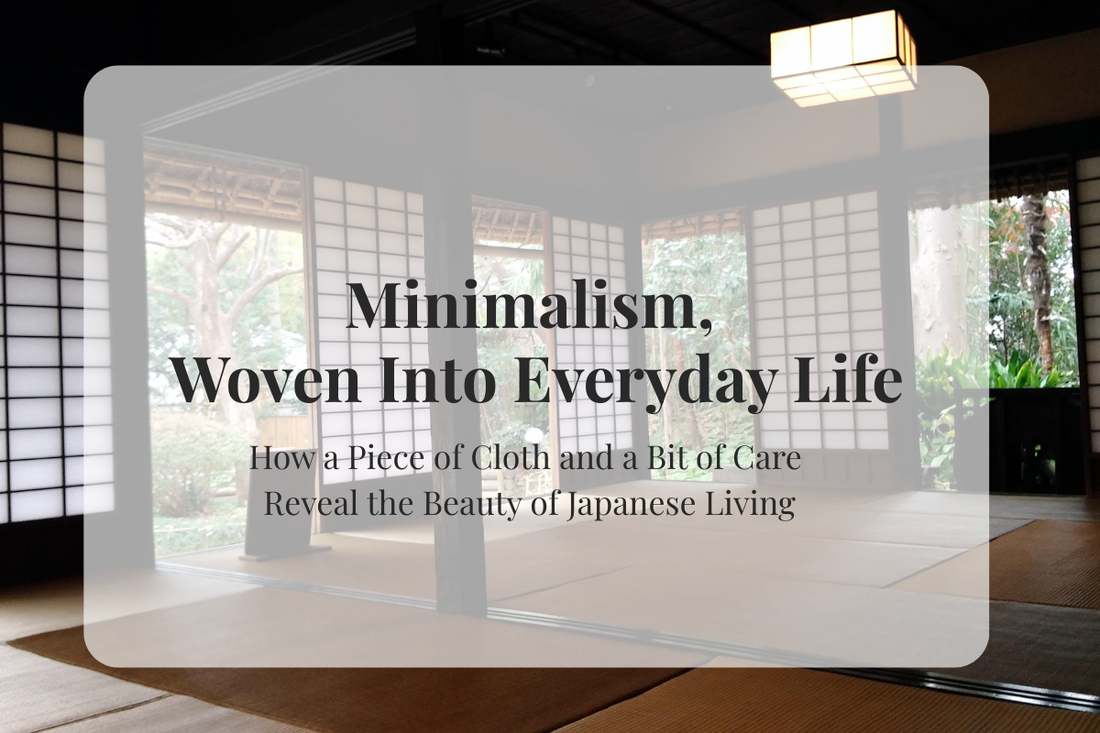
Minimalism Was Already in My Grandmother’s Daily Life
Furoshiki and the Japanese Aesthetic of Living
There was a vacuum cleaner in my grandmother’s house, but she rarely used it.
Instead, she would sprinkle used tea leaves on the tatami floor and sweep with a broom. The slightly damp leaves would catch even the finest dust between the straw mats.
What we now call “eco-cleaning” or “sustainable living” was simply a part of her everyday routine.
Looking back, I realize how deeply rooted the principles of minimalism were in traditional Japanese life.
The Quality of Life Begins with What You Choose, before You Buy
Online shopping is undeniably convenient.
In today’s world, we’ve grown so accustomed to acquiring things with just a click. But do we always stop to ask ourselves whether we truly need what we’re buying?
That question alone can shift the way we live.
Personally, I limit my grocery shopping to only what fits inside a furoshiki.
I bring a basket instead of using a cart, and carry everything myself.
It’s a small act, but it naturally encourages more mindful choices, only what I can carry, only what I really need.
The Wisdom of Using Things to the Very End
My grandmother cleaned the wooden veranda with rags made from old towels.
They were used until they were truly worn out, then let go with gratitude.
Recently, I cleaned our floors at home using baking soda and sesquicarbonate.
The cloth I used was an old furoshiki, long forgotten in the closet, its color slightly faded.
It was no longer fit for wrapping gifts, but it found its final role in helping our home shine.
I was able to say goodbye to it with a feeling of appreciation.
The Quiet Joy of Turning Cloth into a Tool
A furoshiki is just a square piece of cloth — until you tie a knot.
With a simple twist, it becomes a bag, a sling, even a backpack.
This kind of flexibility — transforming everyday items into tools — reflects the ingenuity of people who lived without written instructions or digital guides.
Taking the extra step, that little bit of effort, brings a sense of joy and connection to what we use.
And in that effort, we often find spaciousness in our hearts.
Now Is the Time to Live with Furoshiki
Take-out cold noodles from the convenience store are delicious — and so convenient.
But they come with layers of intricate packaging: two tiers separating noodles and toppings, additional pouches for soup and seasoning.
When I throw them away, I always feel it: I’ve just consumed another set of waste.
Of course, we all have busy days.
But if I pack a homemade lunch wrapped in a furoshiki, it’s healthier, cheaper, and kinder to the environment.
So why not pause for a moment and reflect?
If each of us lived by the simple rule of “only what fits in a furoshiki,” imagine how much less waste the world would generate.
The Richness of Choosing How We Live
My grandmother’s way of life reminds me:
True minimalism isn’t about having less — it’s about cherishing only what we truly need.
Furoshiki brings that wisdom into our modern lives.
It encourages us to see with intention, to use things with care, and to enjoy the creativity that comes with doing more with less.
Maybe it’s time to bring a little bit of that spirit back into our daily rhythm.
